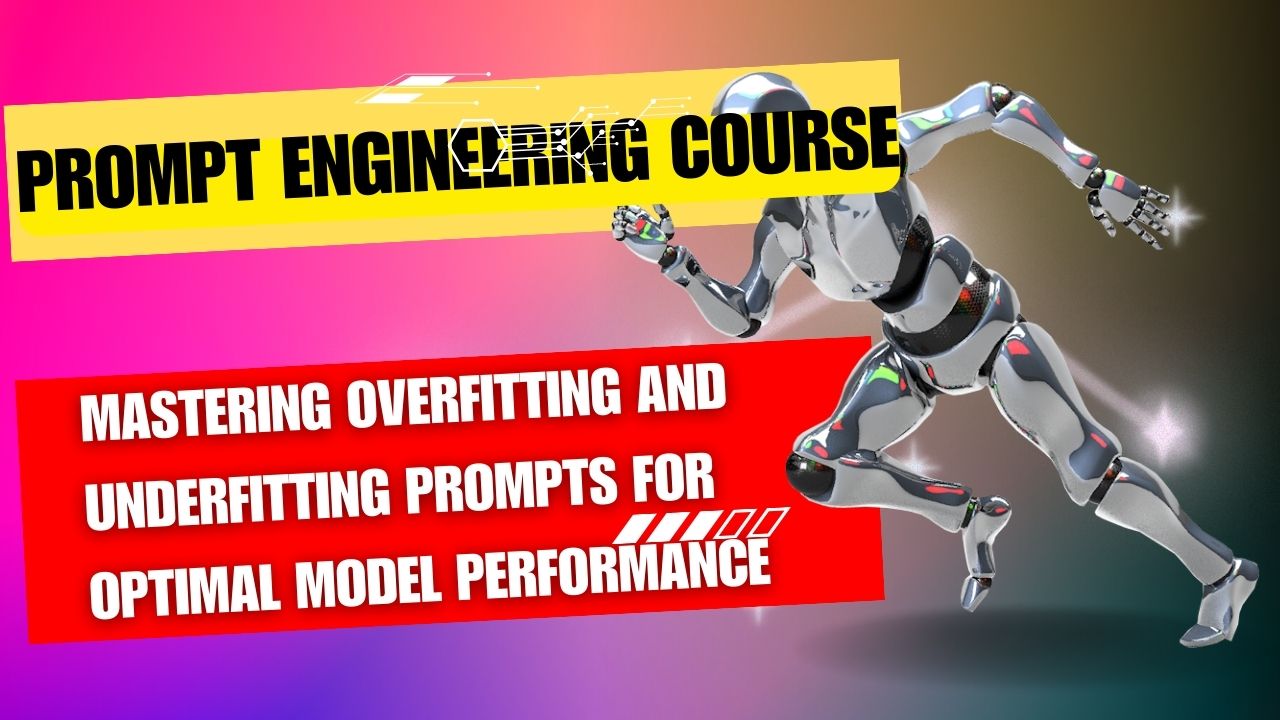Mastering Overfitting and Underfitting Prompts for Optimal Model Performance | Prompt Engineering Course by Muktar
This extensive guide delves into the notions of overfitting and underfitting prompts. Learn how to achieve the ideal balance for model performance.
Introduction:
The appropriate mix of complexity and simplicity is critical for model performance in machine learning and natural language processing. Overfitting and underfitting are two key ideas that have a substantial impact on machine-generated content quality. We go further into these ideas in this tutorial, giving you with actionable insights to guarantee your models provide accurate and coherent outputs.
Overfitting and Underfitting: Unraveling the Concepts
Overfitting and underfitting are phenomena that occur when machine learning models are trained. They describe how well a model generalizes its learning from training data to unobserved data.
Overfitting: When Complexity Goes Awry
Overfitting happens when a model grows overly complicated and begins to capture noise or random oscillations in training data. As a result, it works admirably on training data but fails to generalize to new, previously unseen data. Consider teaching a child a poem by heart and then asking them to write a new one; they may struggle since they have remembered the precise words rather than comprehending the creative process.
Underfitting: Embracing Simplicity at a Cost
Underfitting, on the other hand, occurs when a model is too basic to capture the underlying patterns in the data. An underfit model, like a student who merely learns the essentials of a subject without delving into the complexities, provides inferior performance on both training and unseen data. It lacks the complexity required to interpret nuanced relationships within the data.
Striking the Right Balance
It is critical for optimal model performance to find the Goldilocks zone between overfitting and underfitting. This is when machine learning's art truly shines. Let's look at various techniques for achieving that balance:
1. Collect High-Quality and Diverse Data
A wide dataset enables models to grasp many situations, just as a well-rounded education prepares humans to face a variety of challenges. Incorporating a diverse set of examples improves model generalization and reduces the danger of overfitting.
2. Feature Engineering: The Craftsmanship of Data
The process of choosing and transforming meaningful attributes from raw data is known as feature engineering. Consider it like refining raw ingredients to create a masterpiece. Making relevant features allows models to focus on important information rather than getting lost in noise.
3. Regularization Techniques: The Safety Harness
During training, regularization approaches constrain the complexity of a model. By punishing large coefficients, some approaches, such as L1 and L2 regularization, prevent models from fitting noise. They function as safety harnesses, preventing overfitting.
4. Cross-Validation: Testing the Waters
The process of dividing data into various groups for training and validation is known as cross-validation. This method evaluates a model's generalization capacity by subjecting it to different data slices. It serves as a litmus test for detecting overfitting or underfitting.
5. Ensemble Learning: Strength in Numbers
To generate superior outcomes, ensemble approaches aggregate predictions from numerous models. It's the same as collecting input from multiple experts before making a decision. Ensemble approaches such as bagging and boosting help to lessen the impact of individual model flaws.
Overfitting and Underfitting Prompts: FAQs:
Q: Can overfitting be completely eliminated?
A: While complete eradication is difficult, good regularization and validation procedures can considerably lessen the impact of overfitting.
Q: How can I identify underfitting in my models?
A: Underfitting frequently leads to consistently poor performance on training and validation data. If your model has difficulty learning even simple patterns, it may be underfitting.
Q: Are there one-size-fits-all solutions to prevent overfitting?
A: No, each model and dataset necessitates a unique methodology. Regularization, feature engineering, and cross-validation should all be tailored to the task at hand.
Q: Can ensemble methods lead to overfitting?
A: Yes, if not adequately managed, ensemble methods can transmit overfitting. This risk can be reduced by using many models and improving ensemble parameters.
Q: Is underfitting always undesirable?
A: While underfitting is normally bad, it can be acceptable when simplicity is more important than precision, as in some rule-based systems.
Q: How does bias relate to overfitting and underfitting?
A: Bias can influence both scenarios. Overfitting can increase biases in the training data, whereas underfitting can result in models failing to detect small biases.
Conclusion:
Mastering overfitting and underfitting prompts is essential for developing robust and successful machine learning models. Understanding the delicate balance between complexity and simplicity can help you direct your models to provide accurate and cohesive outputs. Remember that, just like in life, finding the sweet spot leads to the best results.
#MachineLearning #promptengineeringcourse #NLP #ModelPerformance #Overfitting #Underfitting #DataScience #AIInsights #EnsembleLearning #Regularization #FeatureEngineering #CrossValidation #ModelOptimization #BiasInML #DataGeneralization #MLTips #TechGuides #AIExplained #DataAnalysis #Algorithm #OptimalModeling #MLConcepts #TechExploration #ModelTraining #AIUnderstanding #DataPatterns #ModelAccuracy #ModelComplexity #MLBalance
Written by: Md Muktar Hossain
























